#duchess of savoy
Text

Catalina Micaela of Spain, Duchess of Savoy, attributed to Sofonisba Anguissola.
#Catalina Micaela of Spain#catherine michelle of spain#duchess of savoy#house of habsburg#Sofonisba Anguissola#16th century#16th century art#long live the queue
28 notes
·
View notes
Text
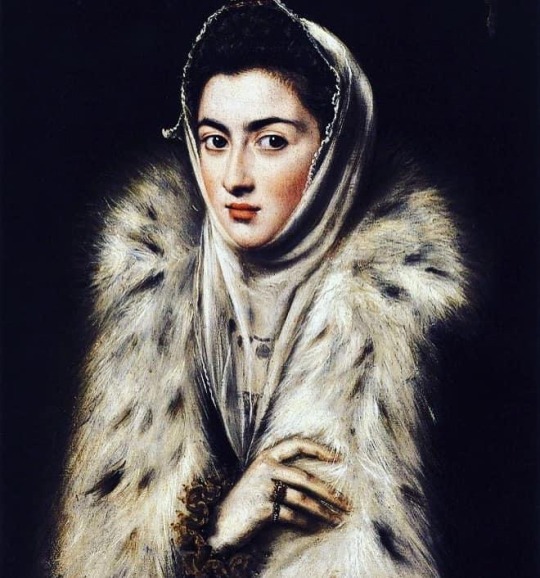
Catherine-Michaela was a daughter of King Philip II and she became Duchess of Savoy by marriage. The artist Sofonisba Anguissola was a Milanese aristocrat from a family with an old name and little money; she received many commissions from the Spanish royal family and died aged 93 in Sicily in 1625.
Painting by artist Sofonisba Anguissola. She painted Princess Catherine-Michaela of Spain in the late sixteenth century.
13 notes
·
View notes
Text
Margaret of Austria's Table at the Court of Savoy, Mechelen
Laid Table by Nicholaes Gillis, 1611 (Photo credit: https://www.wga.hu/frames-e.html?/html/g/gillis/laidtabl.html)
When Maximilian I, Holy Roman Emperor, designated his daughter Margaret of Austria as his procurator of the Netherlands, she bought a complex of buildings in Mechelen located across the street from the home of his grandchildren, the son and daughters of Margaret’s brother, Philip…
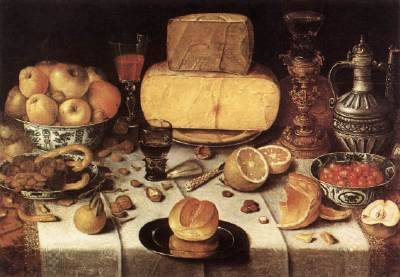
View On WordPress
#Anne Boleyn#Burgundian history#Charles V#Court of Savoy#Duchess of Savoy#Habsburg#Holy Roman Emperor#Low Countries#Margaret of Austria#Maximilian I#Mechelen#medieval history#Netherlands#Regent of the Netherlands#Women’s history
1 note
·
View note
Text
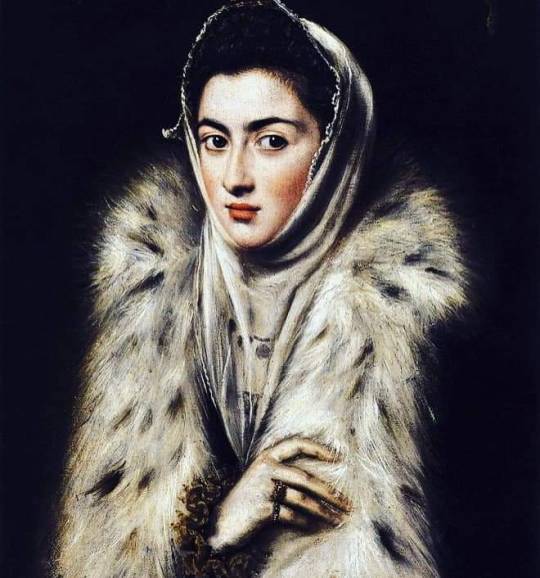
2 notes
·
View notes
Photo

Françoise Madeleine d'Orléans, Duchess of Savoy. Unknown artist.
#Françoise Madeleine d'Orléans#royaume de france#maison d'orleans#bourbon orleans#maison d'orléans#full length portrait#casa savoia#full-length portrait#mademoiselle de valois#duchess of savoy
6 notes
·
View notes
Text
𝙲𝚑𝚘𝚌𝚘𝚕𝚊𝚝𝚎 𝚌𝚊𝚛𝚍𝚜 𝚘𝚏 𝚁𝚘𝚢𝚊𝚕 𝚠𝚘𝚖𝚎𝚗 👑✨🍫
(𝙿𝚊𝚛𝚝 𝟸 𝚘𝚞𝚝 𝚘𝚏 𝟺)
~~~~~~~~~~~~~~~~~~~~~~~~~~~~~~~~~~~~~~~~~~~~~~~

Queen Sophia of Greece, née Princess Sophia of Prussia.
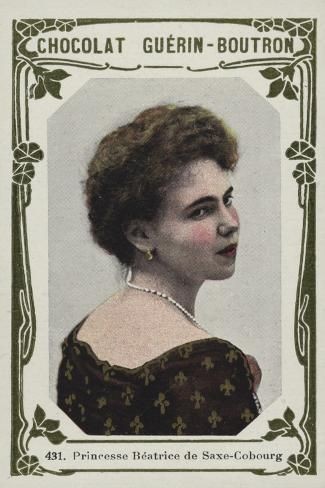
Princess Beatrice, Duchess of Galliera, née Princess Beatrice of Edinburgh.
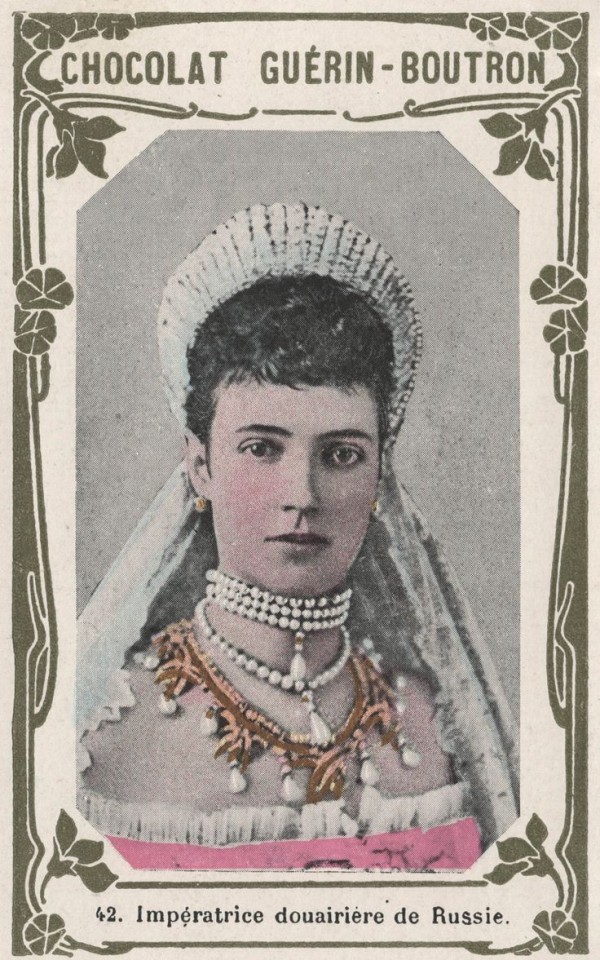
Empress Maria Feodorovna, née Princess Dagmar of Denmark.

Queen Marie of Romania, née Princess Marie of Edinburgh.
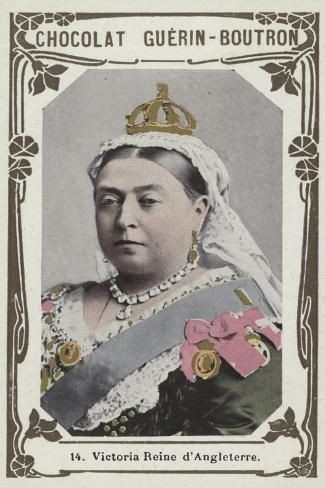
Queen Victoria, née Princess Alexandrina Victoria of Kent.
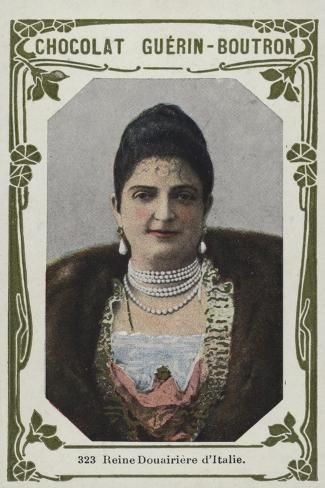
Queen Margherita of Italy, née Princess Margherita of Savoy.
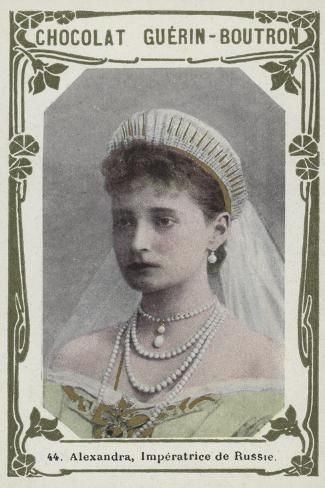
Empress Alexandra Feodorovna, née Princess Alix of Hesse.

Princess Louise of Schaumburg-Lippe, née Princess Louise of Denmark.
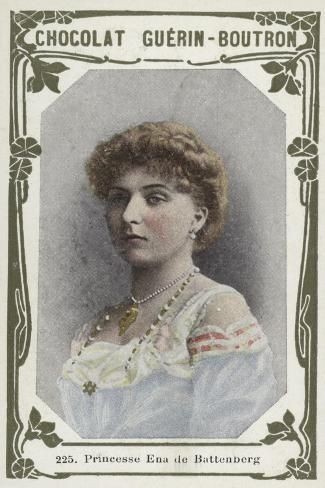
Queen Victoria Eugenie of Spain, née Princess Victoria Eugenie of Battenberg.
#queen sophia of greece#princess sophia of prussia#princess beatrice of edinburgh#duchess of galliera#empress maria feodorovna#dagmar of denmark#queen marie of romania#princess marie of edinburgh#queen victoria#queen margherita of italy#margherita of savoy#empress alexandra feodorovna#alix of hesse#princess louise of denmark#princess louise of schaumburg-lippe#queen victoria eugenie of spain#princess victoria eugenie of battenberg#chocolate cards
22 notes
·
View notes
Text
Anne de Beaujeu
Anne de Beaujeu (Anne de France, 1461-1522)
Unofficial regent of France and duchess of Bourbon

Anne de Beaujeu provides an example of female political authority in a country where the Salic Law prevented women from assuming the crown. She also illustrates the tension between an increasingly centralized monarchy on the one hand and feudal independence on the other, having supported both causes at different times in her life. Probably born in 1461, Anne de Beaujeu was the oldest of the surviving children of Louis XI, king of France, and the one said to resemble him most intellectually and temperamentally. When this king died in 1483 leaving a thirteen-year-old Charles VIII on the throne, Anne and her husband, Pierre de Beaujeu, as his guardians, assumed control. In so doing, they resisted Louis d'Orléans, the next in line to the throne, who wished to be named regent. Louis and his supporters sought help from the estates-general who met in 1484 but who ultimately supported Anne's cause. Referred to as Madame la Grande (Grand Madam), Anne was recognized by the court and by foreign emissaries as the person actually ruling France during the early years of Charles's reign.
In 1488 she and Charles VIII squelched a noble uprising, the Guerre Folle (the Foolish War) led by Louis d'Orléans and Francis II duke of Brittany. Charles then married the new duchess of Brittany, Anne, to ensure the duchy's loyalty to France. Meanwhile Pierre de Beaujeu's two older brothers had died, leaving Pierre with the Bourbon inheritance. Anne and her husband were now the richest and most powerful nobles in France. In 1491, after the loss of one infant and fifteen years of childlessness, Anne gave birth to a daughter, Suzanne. As Charles VIII grew increasingly independent of his older sister, Anne redirected her attention to her own lands and feudal duties, though she remained his advisor while retaining her ties to the court. When Charles died suddenly in 1498 leaving no heirs, Louis d'Orléans became king of France. Neither his previous attacks on the crown nor his well-known personal vices inspired confidence in his subjects, so the support of Anne de Beaujeu and her husband were instrumental in a smooth accession to the throne. Anne agreed to overlook their antagonistic past and did not hinder the annulment Louis immediately requested from her physically disabled sister, Jeanne. In exchange, Louis XII waived the royal rights to the Bourbon inheritance in the case that Anne and Pierre did not have a male heir. Once all this had been established, the Bourbon's relationship with Louis XII and his new queen, Charles's widow Anne de Bretagne, became quite cordial. Anne de Beaujeu no longer held any direct influence, however, over the governance of the French state.
In 1504 or 1505, after the death of her husband and before she arranged a marriage for her daughter, Anne wrote Suzanne a book of lessons, Les Enseignements d'Anne de France, duchesse de Bourbonnois et d'Auvergne, à sa fille Susanne de Bourbon, modeled on the book that Louis IX had written for his daughter, the one her own father had written for Charles, and the writings of Christine de Pizan. Anne's version contains conventional advice on the appropriate behavior for noblewomen. During her unofficial regency, Anne had overseen the education of many young noblewomen at court, including Louise de Savoie, Marguerite d'Autriche, and Diane de Poitiers. The humble feminine figure that emerges from the Enseignements, however, seems at odds with their independent author. More easily recognizable are the anxieties about life as an older widow distant from court. The Enseignements ends with a tale about a noblewoman who bravely sacrifices her only child for the honor of her family and the interests of the king. Suzanne was, in fact, married shortly thereafter to a cousin to protect the integrity of the Bourbon inheritance.
In contrast to the moral of her tale, however, the interests of a noble family and those of the crown did not always overlap. Before she died, Anne witnessed the opposition of two adults whom she had raised from childhood: her son-in-law, the connétable de Bourbon, and Louise de Savoie, mother of Francis I, successor to Louis XII. Louise and her son, suspicious of the wealth and power of the connétable, the Bourbon heir, challenged his inheritance. After losing the domain that Anne had so carefully built up and defended during her lifetime, the connétable, perhaps with Anne's bitter approval, responded by betraying the French king Francis I- the other cause that Anne had defended so staunchly during her brother's reign. Anne died in 1522, before this ultimate betrayal.
Emily Thompson in Encyclopedia of Women in the Renaissance.
#xv#xvi#anne de france#anne de beaujeu#regents#duchesse de bourbon#louis xi#charles viii#pierre de beaujeu#louis xii#françois ii de bretagne#anne de bretagne#la guerre folle#suzanne de bourbon#sainte jeanne de france#louise de savoie#marguerite d'autriche#diane de poitiers#charles iii de bourbon#le connétable de bourbon#françois i#proof that anne approved of this ? i didn't find anything#the connétable's betrayal is a complex story#one can point fingers at françois i and louise de savoie too#emily thompson#encyclopedia of women in the renaissance
17 notes
·
View notes
Text
Louise of Savoy and her court.

3 notes
·
View notes
Text
Favorite royals who were devoted mothers.(3/5)
Louise of Savoy, Duchess of Bourbon.

#louise of savoy#Louise de Savoie#François I#duchess of Bourbon#Duchesse de Bourbon#Claire Foy#House Valois-Angoulême#House Valois#House of Bourbon
6 notes
·
View notes
Text



Magnificent and Historic Natural pearl and diamond tiara/necklace
"One of the most important tiaras to appear at auction in recent years, this royal tiara dates to the second half of the 19th century. Steeped in the rich history of the House of Savoy, this tiara hails an extraordinary provenance. Likely to have been presented to Maria Vittoria dal Pozzo in 1867 as a wedding gift on the occasion of her marriage to Amedeo of Savoy, Duke of Aosta, later elected King of Spain as Amadeo I (1870- 1873), the tiara, which has remained with the family for over 150 years, is believed to have been created by Musy Padre e Figli – Court Jeweller of Turin, and one of the oldest goldsmiths in Europe.
Composed of graduated scroll motifs set with cushion-shaped, circular- and single-cut diamonds, framing eleven slightly baroque drop-shaped natural pearls, the jewel has more recently been seen worn as an elegant necklace.
The tiara is designed as a succession of eleven graduated scroll motifs, each composed of a natural pearl surrounded by old cut diamonds. The surmount rests on a detachable band composed of cluster and bar motifs set with cushion-shaped diamonds. The scroll motifs are detachable and may be adapted and worn as a necklace. The tiara, which was created by Musy, belonged to Maria Vittoria Carlotta Enrichetta Giovanna dal Pozzo della Cisterna (1847-1876), Duchess of Aosta and Queen of Spain."
Sotheby's
#sotheby's#sothebys#spanish royal family#italian nobility#italian royal family#tiara#tiaras#diadem#diadems#necklace#convertible#diamond#diamonds#pearl#pearls#tiara crown#tiaras crowns#tiarascrowns#tiaracrown
163 notes
·
View notes
Text




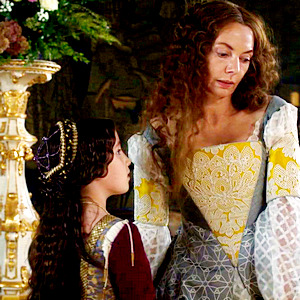
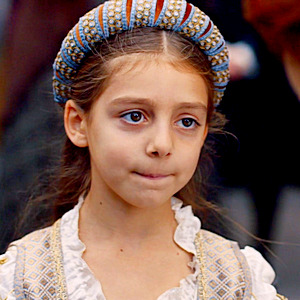
𓅃 ANNE BOLEYN APPRECIATION WEEK 𓅃
Day Two - Favourite Historical Anne Quote (either by Anne herself or about Anne):
I find her so bright and pleasant for her young age that I am more beholden to you for sending her to me than you are to me.
— Margaret of Austria, Duchess of Savoy to Thomas Boleyn, English Ambassador to the low countries.
#the spanish princess#thespanishprincessedit#perioddramaedit#anneboleynweek#anne boleyn#margaret of austria#my edits
157 notes
·
View notes
Text






florence + the machine lyrics x colors x textiles in art – black
Kiss with a Fist – Lungs // Queen Elizabeth I – attributed to Nicholas Hilliard 🐈⬛ Lover to Lover – Ceremonials // Portrait of a Woman – Antonis Mor 🐈⬛ Spectrum – Ceremonials // Catalina Micaela of Austria, Duchess of Savoy – Alonso Sánchez Coello 🐈⬛ Bedroom Hymns – Ceremonials // Portrait of Mary Rogers, Lady Harington – Marcus Gheeraerts the Younger 🐈⬛ June – High as Hope // Portrait of Madame Leblanc – Jean Auguste Dominique Ingres 🐈⬛ South London Forever – High as Hope // Anna of Denmark, Duchess of Saxony – Lucas Cranach the Younger
#florence + the machine lyrics x colors x textiles in art#nicholas hilliard#alonso sánchez coello#marcus gheeraerts the younger#jean auguste dominique ingres#lucas cranach the younger#kiss with a fist#lover to lover#spectrum#bedroom hymns#june#south london forever#lungs#lungs album#ceremonials#high as hope#florence + the machine#florence and the machine#fatm#art#art history#lyrics#lyric art
96 notes
·
View notes
Text


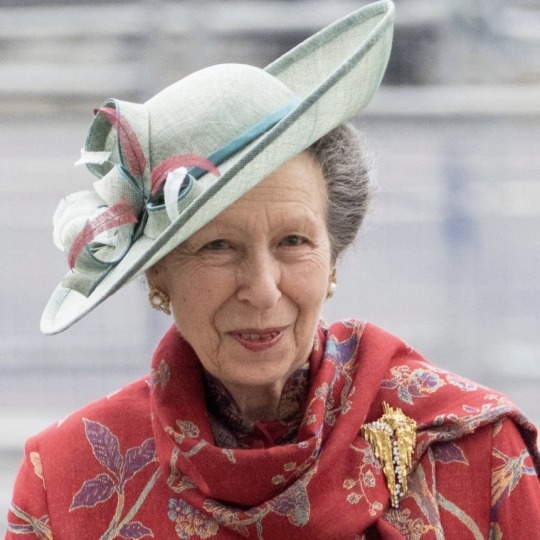
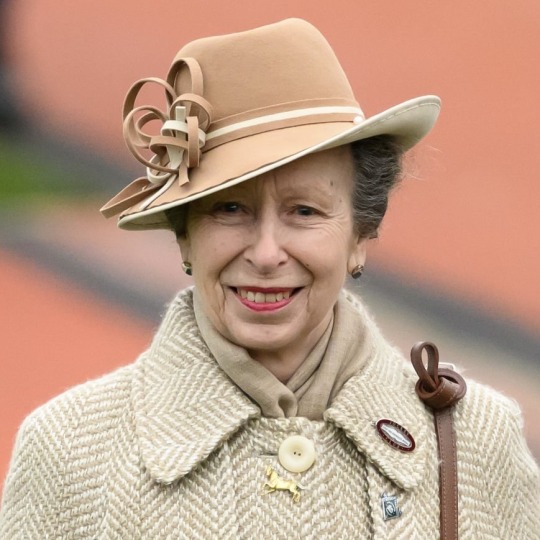





The Princess Royal’s Official Engagements in March 2024
01/03 In Dubai Princess Anne; 🇦🇪
As President of the Mission to Seafarers, visited Dubai Ports World in Port of Jebel Ali. 🚢
As President of the Mission to Seafarers, attended a Women in Shipping and Trading Conference Panel Discussion at Dubai Ports World Pavilion. 👩💼🛳️
Opened Donnelly Lines British Forces Headquarters at Al Minhad Airbase. 🛫
Called upon HH Sheikha Hind bint Maktoum bin Juma Al Maktoum (wife of the Vice President and PM of the UAE and Ruler of Dubai). 👑
Attended a Royal British Legion Reception on board the QUEEN ELIZABETH II floating hotel. 🍾
As President of the Royal Yachting Association, visited Dubai Offshore Sailing Club. 🛥️
As President of the Mission to Seafarers, this attended a Dinner at the One and Only Royal Mirage Hotel. 🍽️
02/03 Departed Dubai International Airport and returned to Heathrow Airport 🇦🇪✈️🇬🇧
04/03 As Guardian of the Chaffinch Trust, held a Management Team Meeting at Gatcombe Park. 🤝
As Guardian of Give Them A Sporting Chance, held a Management Team Meeting at Gatcombe Park. ⚽️
unofficial Along with the Duke of Kent (President of the RNLI), Sir Tim (Vice President of the RNLI) attended a Service of Thanksgiving to commemorate the 200th Anniversary of the RNLI at Westminster Abbey. 🛟
05/03 As Patron of Livability, visited New Court Place, to mark its 180th Anniversary. 🦼
Opened First Garden Cities Homes' Sheltered Housing Scheme at John Coxall Court in Letchworth Garden City. 🏡
As Patron of the Butler Trust, visited HMP/Young Offenders Institute Aylesbury. 🔗👮
06/03 On behalf of the King, held two investiture ceremonies at Windsor Castle. 🎖️
07/03 As President, attended the 32nd National Equine Forum at the Institution of Mechanical Engineers. 🐴
As Grand Master of the Royal Victorian Order, attended Evensong and a Reception at The King’s Chapel of the Savoy. ⛪️🎖️
08/03 As Chancellor of the University of London, visited King’s College London’s Portable MRI Project at the Denmark Hill Campus. 🩻
As Patron of Save the Children UK, attended the International Women’s Day Luncheon at Bluebird on Kings Road. 👭💪
10/03 Attended the Global Fraud Summit at the Guildhall in London. 💻👾
11/03 Attended the Commonwealth Day Service at Westminster Abbey alongside The Queen, The Prince of Wales, The Duke and Duchess of Edinburgh, The Princess Royal, The Duke and Duchess of Gloucester and The Duke of Kent. 🌎🌍🌏
Attended a Commonwealth Day Reception at Westminster Abbey. 🌍🥂
With Sir Tim As Past Master of the Worshipful Company of Butchers, attended the Annual City Food and Drink Lecture at Guildhall. 🍽️🍾
12/03 With Sir Tim Attended a luncheon on board Hebridean Princess to mark its 60th Anniversary in Greenock. 🥪
With Sir Tim Visited Peel Ports Group Limited Greenock Ocean Terminal. 🛳️
13/03 unofficial Attended Style Wednesday at Cheltenham Festival. 👒
14/03 unofficial Attended St. Patrick’s Thursday at Cheltenham Festival. ☘️
15/03 With Sir Tim Attended Gold Cup Friday at Cheltenham Festival. 🏆
16/03 With Sir Tim As Patron of the Scottish Rugby Union, attended the Six Nations Rugby Match between Scotland and Ireland at Aviva Stadium in Dublin. 🏴🇮🇪🏉
18/03 As Patron of Save the Children UK, attended the International Financial Review Annual Awards Dinner at the Grosvenor House Hotel in London.🏅
19/03 As Patron of Sense, opened Sense Hub Loughborough.🦻👨🦯
On behalf of The King, with the Duchess of Edinburgh, held a Reception for Korean War Veterans at Buckingham Palace. 🪖
As Patron of the Butler Trust, held the Annual Awards Ceremony at St James’s Palace. 🏆
With Sir Tim As President of the Royal Commission for the Exhibition of 1851, attended a Presidential Dinner at Fishmongers’ Hall. 🐟🍽️
20/03 Held a morning and an afternoon investiture ceremony at Windsor Castle. 🎖️
21/03 As President of the Benenden Society and Founders’ Patron of Benenden School, attended the Centenary Service in Canterbury Cathedral. ⛪️👩🦰
Attended the Commonwealth Youth Orchestra and Choir Presentation Concert at Spencer House. 🎻🎼
22/03 Opened the new North Atlantic Treaty Organisation Allied Rapid Reaction Corps Headquarters Accommodation at the Officers’ Mess in Imjin Barracks. 🌊
Visited the Joint Casualty and Compassionate Centre and Ministry of Defence Medal Office at Innsworth House in Imjin Barracks. ⛑️🎖️
As Patron of Stroud Hospital League of Friends, visited Stroud Maternity Unit. 🏥👶
25/03 Visited MacRebur Limited. 🏴🛣️
Visited the Lockerbie Air Disaster Memorial at Lockerbie Garden of Remembrance. 🌹👼🏻
As President of the Scotch Chef’s Club, opened Browns Food Group’s new facilities at Kelloholm Industrial Estate. 🐄
As Royal Patron of Friends of TS Queen Mary, attended a Reception at the Hilton Glasgow. ⛴️🥂
26/03 Opened the Rural and Veterinary Innovation Centre at Scotland's Rural College in Inverness. 🩺🐑
As Chancellor of the University of the Highlands and Islands, attended the Integrated Land Use Conference. 🚜🧑🌾
As Royal Patron of the Royal Zoological Society of Scotland, visited the Saving Wildcats Project at Highland Wildlife Park in Kincraig. 🐯🦁
As Patron and Honorary Member of the Grand Antiquity Society of Glasgow, attended a Dinner at the Trades Hall of Glasgow. 🏴📜
Unofficial Sir Tim, as Chair of Trustees, attended the opening of the Adani Green Energy Gallery at the Science Museum 🌍🍃💚
31/03 unofficial With Sir Tim Attended the Easter Mattins service held at St George’s Chapel in Windsor Castle ⛪️🐣
Total official engagements for Anne in March: 49
2024 total so far: 134
Total official engagements accompanied by Tim in March: 6
2024 total so far: 29
FYI - due to certain royal family members being off ill/in recovery I won't be posting everyone's engagement counts out of respect, I am continuing to count them and release the totals at the end of the year.
#hardest working royal 🫡#a busy bee#princess anne#princess royal#tim laurence#timothy laurence#always there to support his wife 🥰#march 2024#aimees unofficial engagement count 2024
45 notes
·
View notes
Text

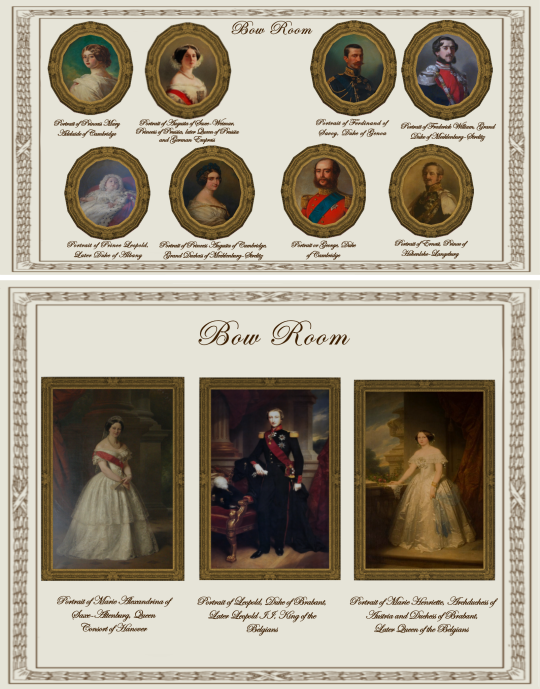
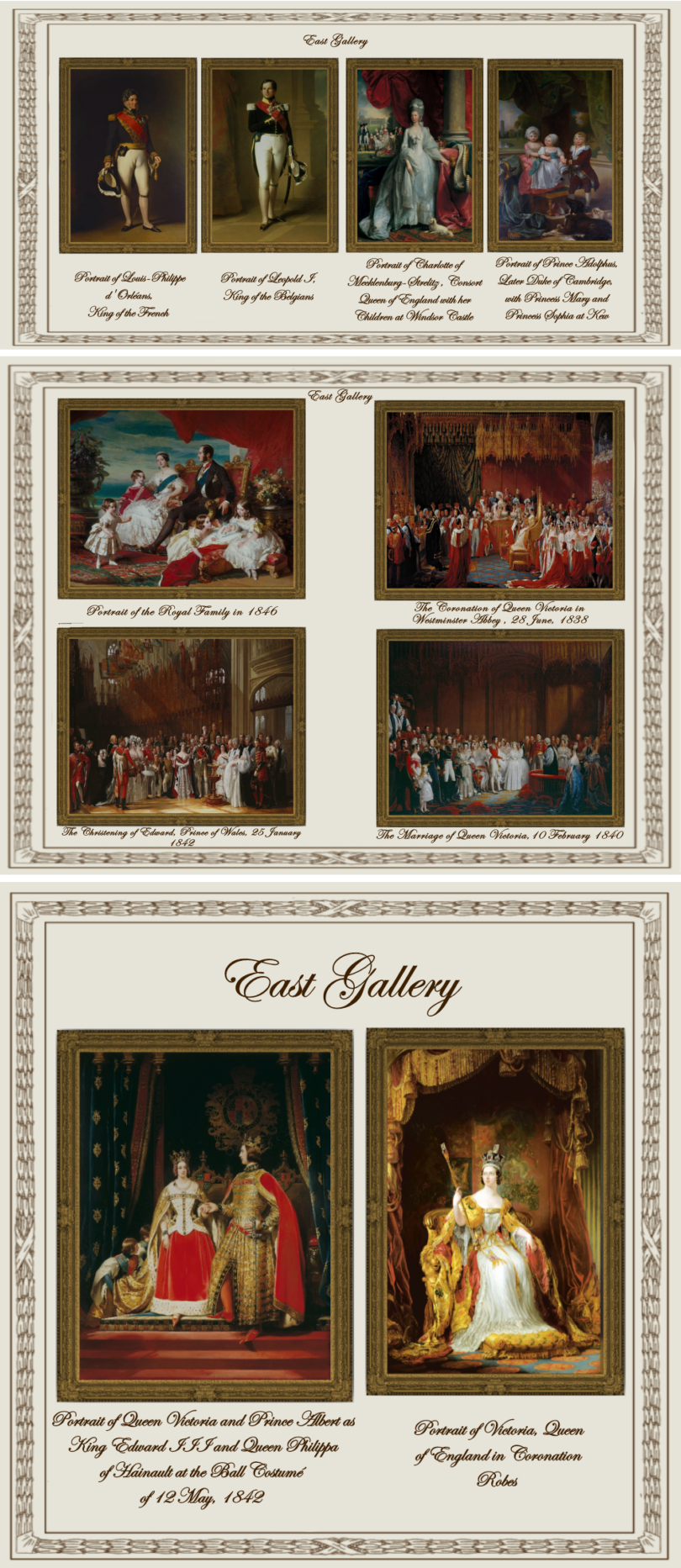
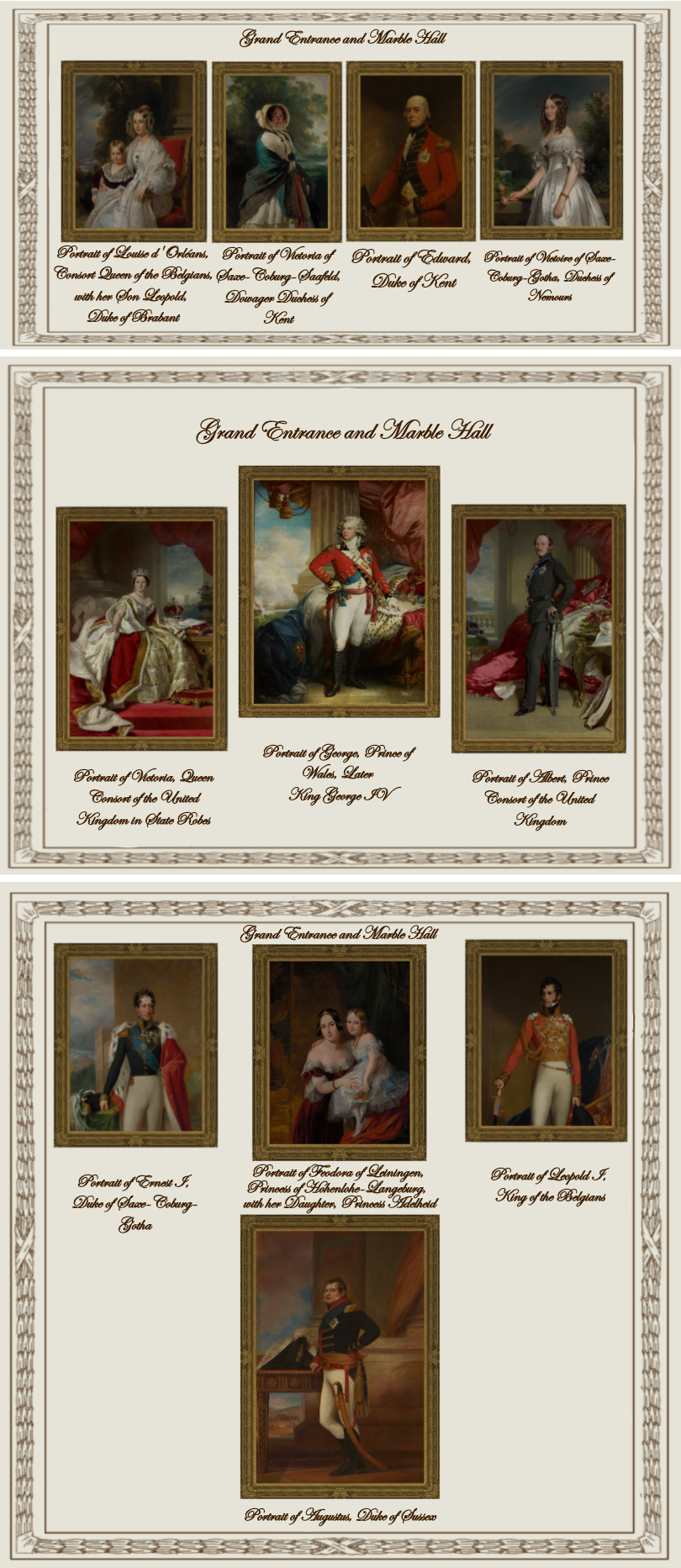

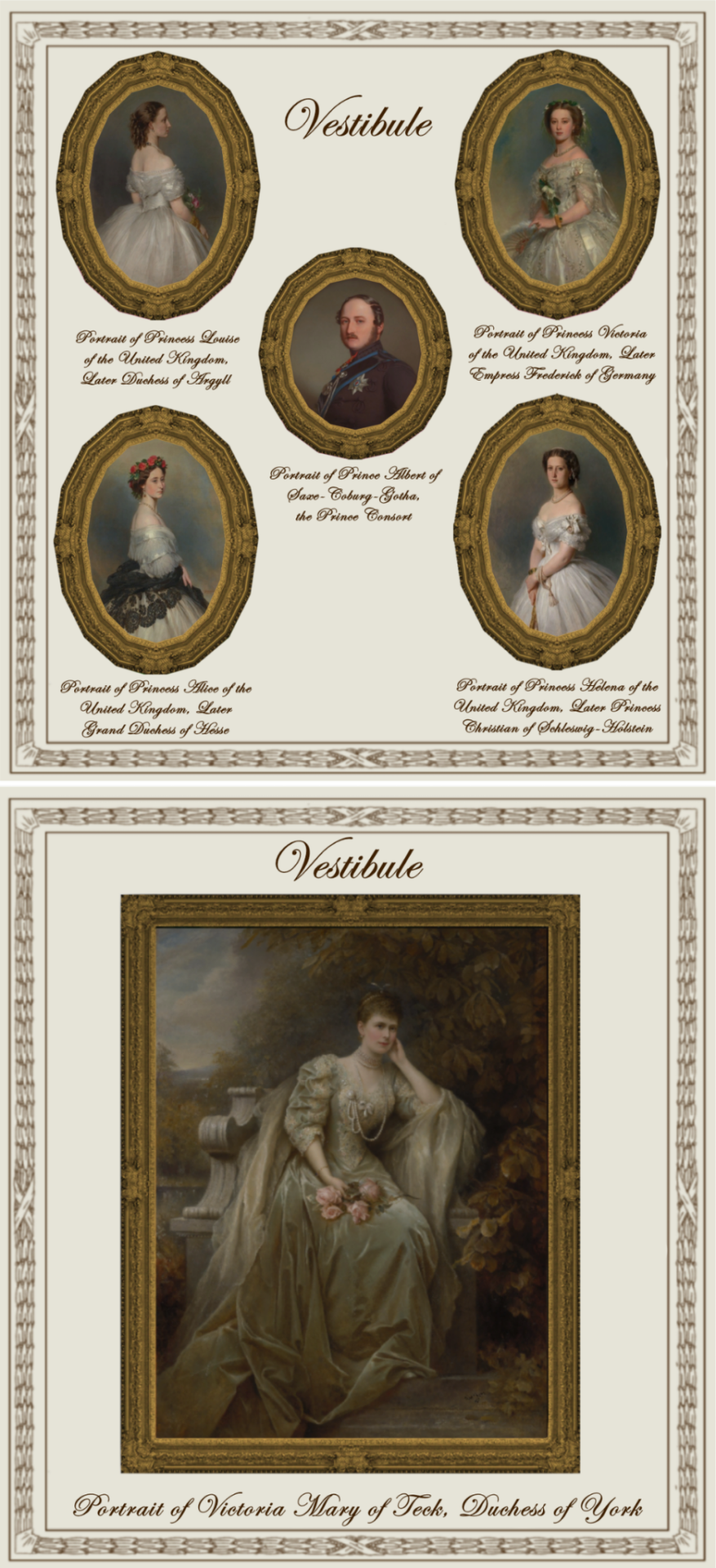


Paintings from Buckingham Palace: part II
A retexture by La Comtesse Zouboff — Original Mesh by @thejim07
Spread among 13 occupied and historic royal residences in the United Kingdom, the collection is owned by King Charles III and overseen by the Royal Collection Trust. The British monarch owns some of the collection in right of the Crown and some as a private individual. It is made up of over one million objects, including 7,000 paintings, over 150,000 works on paper, this including 30,000 watercolours and drawings, and about 450,000 photographs, as well as around 700,000 works of art, including tapestries, furniture, ceramics, textiles, carriages, weapons, armour, jewellery, clocks, musical instruments, tableware, plants, manuscripts, books, and sculptures.
Some of the buildings which house the collection, such as Hampton Court Palace, are open to the public and not lived in by the Royal Family, whilst others, such as Windsor Castle, Kensington Palace and the most remarkable of them, Buckingham Palace are both residences and open to the public.
About 3,000 objects are on loan to museums throughout the world, and many others are lent on a temporary basis to exhibitions.
-------------------------------------------------------
The second part includes paintings displayed in the Ball Supper Room, the Ballroom, the Ballroom Annexe, the Bow Room, the East Gallery, the Grand Entrance and Marble Hall, the Minister's Landing & Staircase, the Vestibule, the Chinese Dining Room and the Balcony Room.
This set contains 57 paintings and tapestries with the original frame swatches, fully recolourable. They are:
Ball Supper Room (BSR):
Portrait of King George III of the United Kingdom (Benjamin West)
Ballroom (BR):
The Story of Jason: The Battle of the Soldiers born of The Serpent's Teeth (the Gobelins)
The Story of Jason: Medea Departs for Athens after Setting Fire to Corinth (the Gobelins)
Ballroom Annexe (BAX):
The Apotheosis of Prince Octavius (Benjamin West)
Bow Room (BWR):
Portrait of Princess Mary Adelaide of Cambridge (William Corden the Younger)
Portrait of Princess Augusta of Cambridge, Grand Duchess of Mecklenburg-Strelitz (Alexander Melville)
Portrait or George, Duke of Cambridge (William Corden the Younger)
Portrait of Frederick William, Grand Duke of Mecklenburg-Strelitz (Franz Xaver Winterhalter)
Portrait of Augusta of Saxe-Weimar, Princess of Prussia, later Queen of Prussia and German Empress (Franz Xaver Winterhalter)
Portrait of Prince Leopold, Later Duke of Albany (Franz Xaver Winterhalter)
Portrait of Ernest, Prince of Hohenlohe-Langeburg (Franz Xaver Winterhalter)
Portrait of Ferdinand of Savoy, Duke of Genoa (Eliseo Sala)
Portrait of Marie Alexandrina of Saxe-Altenburg, Queen Consort of Hanover (Carl Ferdinand Sohn)
Portrait of Leopold, Duke of Brabant, Later Leopold II, King of the Belgians (Nicaise de Keyser)
Portrait of Marie Henriette, Archduchess of Austria and Duchess of Brabant, Later Queen of the Belgians (Nicaise de Keyser)
East Gallery (EG):
Portrait of Leopold I, King of the Belgians (Franz Xaver Winterhalter)
Portrait of Victoria, Queen of England in Coronation Robes (Sir George Hayter)
Portrait of Louis-Philippe d'Orléans, King of the French (Franz Xaver Winterhalter)
Portrait of Charlotte of Mecklenburg-Strelitz, Consort Queen of England with her Children at Windsor Castle (Benjamin West)
Portrait of Prince Adolphus, later Duke of Cambridge, With Princess Mary and Princess Sophia at Kew (Benjamin West)
The Coronation of Queen Victoria in Westminster Abbey, 28 June, 1838. (Sir George Hayter)
The Christening of Edward, Prince of Wales 25 January, 1842 (Sir George Hayter)
The Marriage of Queen Victoria, 10 February, 1840 (Sir George Hayter)
Portrait of the Royal Family in 1846 (Franz Xaver Winterhalter)
Portrait of Queen Victoria and Prince Albert as King Edward III and Queen Philippa of Hainault at the Ball Costumé of 12 May, 1842 (Sir Edwin Landseer)
Grand Entrance and Marble Hall (GEMH):
Portrait of Edward, Duke of Kent (John Hoppner)
Portrait of Ernest I, Duke of Saxe-Coburg-Gotha (George Dawe)
Portrait of Victoria of Saxe-Coburg-Saafeld, Dowager Duchess of Kent (Franz Xaver Winterhalter)
Portrait of Albert, Prince Consort of the United Kingdom (Franz Xaver Winterhalter)
Portrait of Victoria, Queen Consort of the United Kingdom in State Robes (Franz Xaver Winterhalter)
Portrait of Louise d'Orléans, Consort Queen of the Belgians, with her Son Leopold, Duke of Brabant (Franz Xaver Winterhalter)
Portrait of Feodora of Leiningen, Princess of Hohenlohe-Langeburg, with her Daughter, Princess Adelheid (Sir George Hayter)
Portrait of George, Prince of Wales, Later King George IV (Mather Byles Brown)
Portrait of Victoire of Saxe-Coburg-Gotha, Duchess of Nemours (Franz Xaver Winterhalter)
Portrait of Augustus, Duke of Sussex (Domenico Pellegrini)
Portrait of Leopold I, King of the Belgians (William Corden the Younger)
Minister's Landing and Staircase (MLS):
Portrait of George, Prince of Wales in Garther Robes (John Hoppner)
The Loves of the Gods: The Rape of Europa (the Gobelins)
The Loves of the Gods: The Rape of Proserpine (The Gobelins)
Vestibule (VL):
Portrait of Prince Albert of Saxe-Coburg-Gotha, the Prince Consort (Unknown Artist from the German School)
Portrait of Princess Alice of the United Kingdom, Later Grand Duchess of Hesse (Franz Xaver Winterhalter)
Portrait of Princess Helena of the United Kingdom, Later Princess Christian of Schleswig-Holstein (Franz Xaver Winterhalter)
Portrait of Princess Louise of the United Kingdom, Later Duchess of Argyll (Franz Xaver Winterhalter)
Portrait of Princess Victoria of the United Kingdom, Later Empress Frederick of Germany (Franz Xaver Winterhalter)
Portrait of Victoria Mary of Teck, Duchess of York (Edward Hughes)
Chinese Dining Room or Pavilion Breakfast Room(CDR):
Set of Four Painted Chinoiserie Wall panels I (Robert Jones)
Set of Four Painted Chinoiserie Wall panels II (Robert Jones)
Set of Four Painted Chinoiserie Wall panels III (Robert Jones)
Set of Four Painted Chinoiserie Wall panels IV (Robert Jones)
Balcony Room or Centre Room (BR):
Chinoiserie Painted Panel I (Robert Jones)
Chinoiserie Painted Panel II (Robert Jones)
Chinoiserie Painted Panel III (Robert Jones)
Chinoiserie Painted Panel IV (Robert Jones)
EXTRAS! (E):
I decided to add the rest of the tapestries from the story of Jason (wich hangs in the Grand Reception Room at Windsor Castle) and (with Jim's permission) added the original mesh for paintings number 2,3,4 & 5 from the Vestibule (seen here and here) wich was never published. These items are:
The Story of Jason: Jason Pledges his Faith to Medea (the Gobelins)
The Story of Jason: Jason Marries Glauce, Daughter of Creon, King of Thebes (the Gobelins)
The Story of Jason: The Capture of the Golden Fleece (the Gobelins)
The Story of Jason: The Poisoning of Glauce and Creon by Medea's Magic Robe (the Gobelins)
Sea Melodies (Herbert James Draper) (made by TheJim07)
-------------------------------------------------------
Found under decor > paintings for:
500§ (BWR: 1,2,3,4,5,6, & 8 |VL: 1)
570§ (VL: 2,3,4 & 5 |E: 5)
1850§ (GEMH: 1 & 3)
2090§ (GEMH: 2,6,7, 9 & 11)
3560§ (GEMH: 4,5 & 10 |BSR: 1 |EG: 1,2,3,4 & 5 |MLS: 1 |BAX: 1)
3900§ (CDR: 1,2,3 & 4 |BR: 1,2,3 & 4 |EG: 10 |VL: 6 |GEMH: 8)
4470§ (MLS: 2 |E: 1)
6520§ (BR 1 & 2| MLS: 3 |EG: 6,7,8 & 9 |BR: 1 & 2 |E: 2,3 & 4)
Retextured from:
"Saint Mary Magdalene" (BWR: 1,2,3,4,5,6, & 8 |VL: 1) found here.
"Sea Melodies" (VL: 2,3,4 & 5 |E: 5)
"The virgin of the Rosary" (GEMH: 1 & 3) found here.
"Length Portrait of Mrs.D" (GEMH: 4,5 & 10 |BSR: 1 |EG: 1,2,3,4 & 5 |MLS: 1 |BAX: 1) found here
"Portrait of Maria Theresa of Austria and her Son, le Grand Dauphin" (CDR: 1,2,3 & 4 |BR: 1,2,3 & 4 |EG: 10 |VL: 6 |GEMH: 8) found here
"Sacrifice to Jupiter" (MLS: 2 |E: 1) found here
"Vulcan's Forge" (BR 1 & 2| MLS: 3 |EG: 6,7,8 & 9 |BR: 1 & 2 |E: 2,3 & 4) found here
(you can just search for "Buckingham Palace" using the catalog search mod to find the entire set much easier!)
Disclaimer!
Some paintings in the previews look blurry but in the game they're very high definition, it's just because I had to add multiple preview pictures in one picture to be able to upload them all! Also sizes shown in previews are not accurate to the objects' actual sizes in most cases.
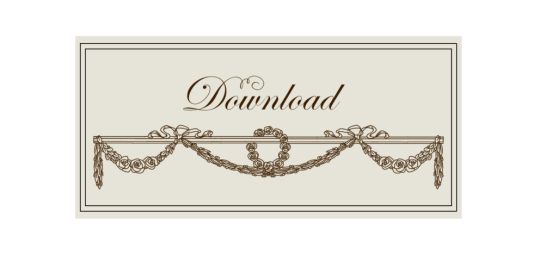
Drive
(Sims3pack | Package)
(Useful tags below)
@joojconverts @ts3history @ts3historicalccfinds @deniisu-sims @katsujiiccfinds @gifappels-stuff
-------------------------------------------------------
#the sims 3#ts3#sims 3#s3cc#sims 3 cc#sims 3 download#sims 3 decor#edwardian#victorian#regency#georgian#buckingham#buckingham palace#wall decor#sims 3 free cc#large pack#this was exhausting
51 notes
·
View notes
Note
Hello😁 can you share your favorite queens?
Thank you for the great ask anon, of course! 🥰
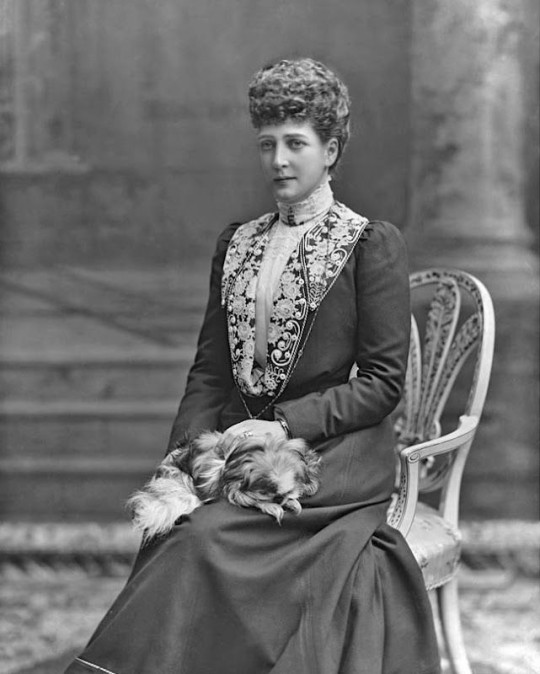
#1: Queen Alexandra of the United Kingdom – (nèe Princess Alexandra of Denmark, "Alix".
— She was beautiful, a warm and caring mother/grandmother, was popular as Princess of Wales and Queen Consort among of her people because of her good nature, and she supported many charities, including her own: "Alexandra Rose Day", founded by Queen Alexandra in 1912, this was a charity where flowers were being sold and all the money went to supporting Londoners in poverty. This was inspired by a priest in her native Denmark selling roses to raise money for those in need, Queen Alexandra brought the idea back to the United Kingdom. ❤✨

#2: Queen Anne Boleyn of England – (nèe Lady Anne Boleyn)
— She was intelligent, funny, caring and kind to all of people, and as her two years as Queen Consort she supported many charities, and even "gave alms to the poor, provided for widows, and even sewed shirts and smocks for the needy". She also helped with promoting new educational identities for monasteries, which were no longer under the protection of the Catholic Church. After only two years of being Queen Consort when she was said to have been 35 years old, she was executed after being imprisoned in the Tower of London for 17 days because she was accused of committing treason, but the true reason she was executed was because she failed to give King Henry VIII a male heir. ☹️💔

#3: Queen Marie Sophie of the Two Sicilies – (nèe Duchess Marie Sophie in Bavaria)
— She was beautiful, bright, and fierce. She was given the nickname the "Warrior Queen", the "Heroine of Gaeta" and the "modern Joan of Arc", rallying the troops, nursing the injured, feeding her forces at her own table and taunting Garibaldi's army from the battlements with the words; "Go ahead and shoot me. I will be where my men are". It was said of her that the Queen would "wipe your brow if you were wounded or hold you in her arms while you die". ❤️🔥👑
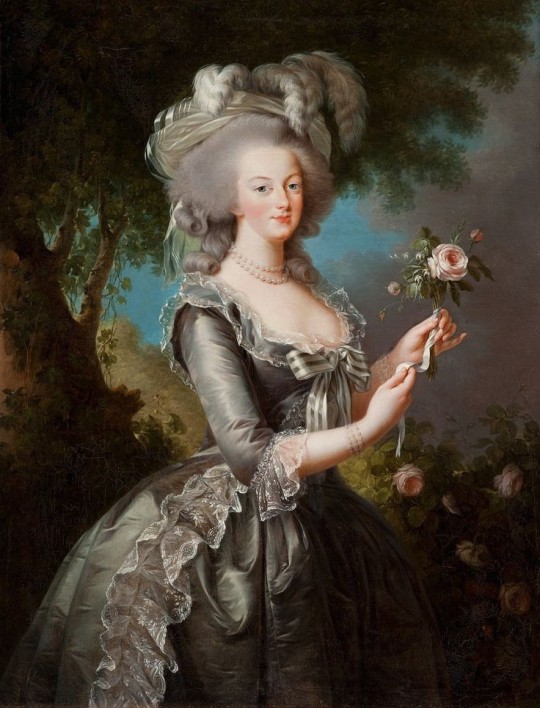
#4: Queen Marie Antoinette of France – (nèe Archduchess Marie Antoinette of Austria)
— She was honest, lovable, bold, a social butterfly who loved gambling, partying and extravagant fashions. Growing up she was closest with her sister, Maria Carolina, who was three years older, and with whom she had a lifelong close relationship. As Queen, Marie Antoinette was always unpopular, she spent lavishly, but her extravagance was only a minor cause of France's growing debt in the 1770-80s. Because of Louis XVI's indecisiveness, Marie played an increasingly prominent political role. But was very beloved for her charitable activities and patronage of the arts. She supported various charitable organizations and institutions, and she was also a benefactress of the poor. 💞🎀
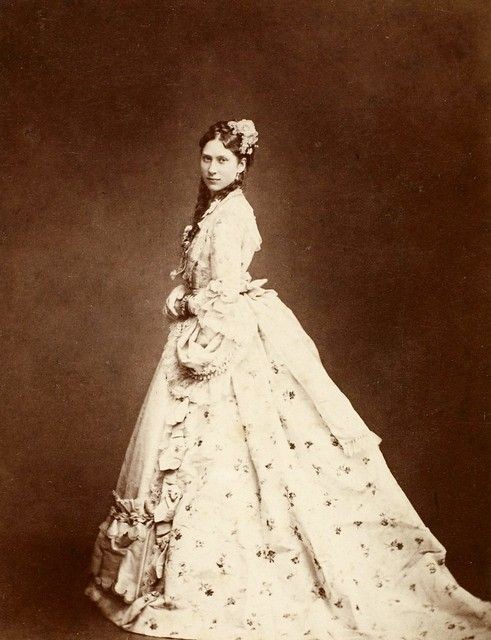
#5: Queen Lovisa of Denmark – (nèe Lovisa of Sweden)
— She was described as intelligent, with an ability to be natural, easy and friendly. And As Queen, she was mainly known for her many charity projects, an interest that she shared with her spouse. She did not care for ceremonial duties and public events, and lived a discreet life dedicated to her children and her interests in art, literature and charity. After a short tenure of only six years as Queen, she was widowed in 1912.
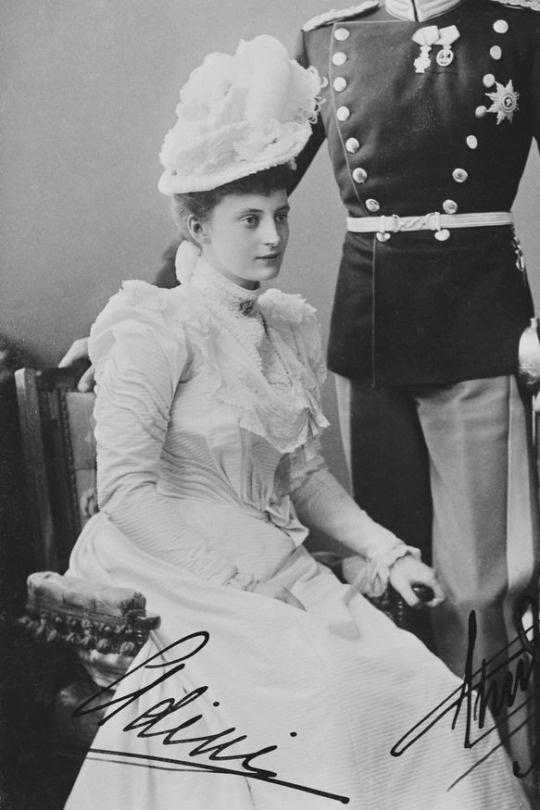
#6: Queen Alexandrine of Denmark – (nèe Alexandrine of Mecklenburg-Schwerin)
— She was reticent by nature. Her childhood was characterised by regular sporting activities, and from a young age she played the piano to a high standard. Her great interest in music stayed with her for her entire life and was passed on to her equally musical eldest son, Prince Frederik (IX). As of her first years as Queen, she had difficulty getting used to public attention, and she preferred to avoid the media limelight, but performed her functions in an exemplary manner. In the home her presence was crucial for the two boys, since Christian X was known for surrounding himself with a certain atmosphere of the barracks. Queen Alexandrine undertook extensive charity work until her death and was an avid golf player and photographer, who also loved doing needlework to a high standard. 💫
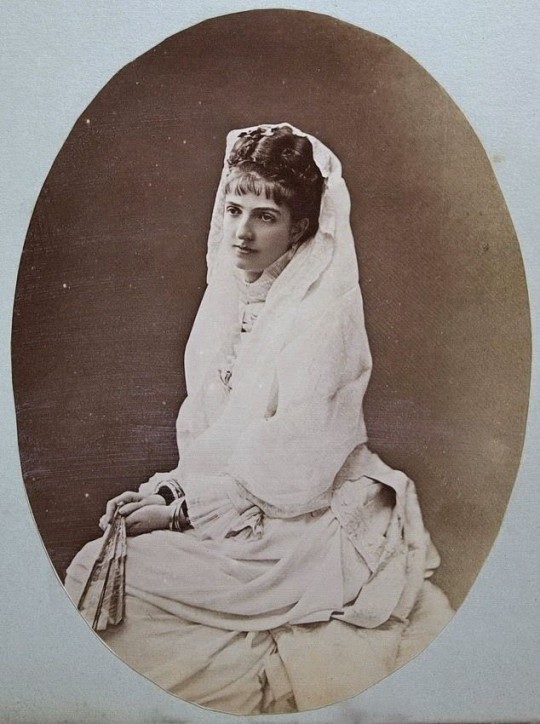
#7: Queen Margherita of Italy – (nèe Margherita of Savoy)
— She was described as sensitive, proud and with a strong force of will without being hard, as well as having the ability to be charming when she chose to. As to her appearance, she was described as a tall, stately blonde, but she was not regarded as a beauty. As Queen, she worked to protect the monarchy against republicans and socialists, and she gathered a circle of conservative intellectuals and artists known as the "Circolo della Regina" (Circle of the Queen) in her famous literary salon known as "Giovedì Della Regina" (Queen's Thursdays), where she benefited artists and writers.
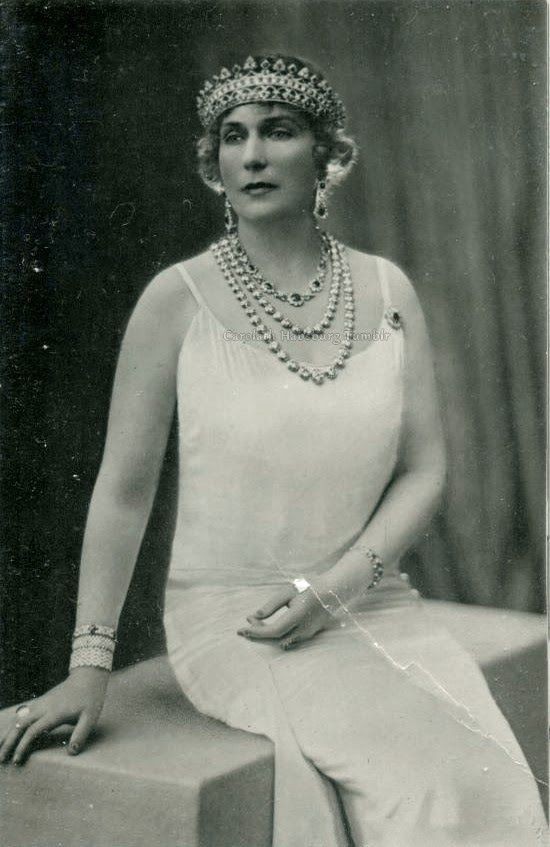
#8: Queen Victoria Eugenie of Spain – (nèe Princess Victoria Eugenie of Battenberg), "Ena".
— She was described as very kind but very strict and she devoted herself to work for hospitals and services for the poor, as well as to education. She also involved herself in the reorganization of the Spanish Red Cross. In 1929, the city of Barcelona erected a statue of her in a nurse's uniform in honour of her Red Cross work and since the the statue has been destroyed.

#9: Queen Elena of Italy – (nèe Elena of Montenegro)
— She was described as shy and reserved but also rather stubborn. Very attached to traditions, with a sensitive soul and a lively and curious mind, she was endowed with a strong love for nature: her favourite flower was the Cyclamen. She was a very tall woman of 180 cm (5'11). As Queen, her commitment to numerous charitable and welfare initiatives, which assured her great sympathy and popularity, was profuse. The Queen went well beyond mere charity: her evangelical spirit led her to practice every day the most genuine and most charitable love of neighbor.

#10: Queen Marie of Romania – (nèe Princess Marie of Edinburgh), "Missy".
— She was described as very beautiful and high spirited. As a young girl, Marie was very close with her sisters, but mostly her sister Victoria Melita, they played many games with their father and Marie's mother, the Duchess of Edinburgh neglected Marie and her sisters' education, considering them not very bright or gifted. But in the fields of painting and drawing, Marie and her sisters had inherited her grandmother, Queen Victoria's talent. On October 11th, 1914, Marie and her husband Ferdinand were acclaimed as king and Queen in the Chamber of Deputies. Princess Anne Marie Callimachi, a close friend of Marie, wrote that "as Crown Princess, she had been popular; as Queen, she was more loved". Marie maintained a certain influence on her husband and the entire court, leading historian A. L. Easterman to write that "it was not Ferdinand, but Marie who ruled in Romania".
#answered ask#queen alexandra#alexandra of denmark#anne boleyn#queen marie sophie of the two sicilies#duchess marie sophie in bavaria#marie antoinette#queen lovisa of denmark#lovisa of sweden#queen alexandrine of denmark#alexandrine of mecklenburg-schwerin#queen margherita of italy#margherita of savoy#queen victoria eugenie of spain#princess victoria eugenie of battenberg#queen elena of italy#elena of montenegro#queen marie of romania#princess marie of edinburgh#informational
14 notes
·
View notes
Text
Claude de France
Claude de France (1499-1524)
Queen of France, duchess of Brittany, countess of Blois, first consort of King Francis I

The "good queen" Claude- today overshadowed by her husband King Francis I- was born in 1499 to Queen Anne de Bretagne and her second husband Louis XII. Bonfires signaled rejoicing throughout the realm for, with the help of Saint Claude, a viable child had been born. The princess, although not the desired son, was fashioned in her mother's pious image to become both sovereign duchess of Brittany and empress (she was engaged to the future Charles V at age two) or queen (of France, as her father, before her first birthday, had secretly declared). A decade later, her sole sibling, Renée de France, the remarkable future Protestant Duchess of Ferrara, would again owe her name to another saintly protector of women in search of a child. Thus if Queen Claude inherited Queen Anne's limp, her ability to bear relatively healthy offspring was entirely her own. Her engagement in 1506 and her marriage in 1514 consolidated the first prince of the blood's claim to the throne, but after seven debilitating pregnancies in ten years (Louise, Charlotte, François, Henri, Madeleine, Charles, Marguerite), the tired body of this honored "daughter, wife and mother" of kings collapsed at the tender age of 24.
The canonization of Francis of Paola (1519) promoted by Claude and her mother-in-law Louise de Savoie in gratitude for protection from illness and the births of namesake male heirs, betrays the inextricable intertwining of the two sides of the royal family, programmed from 1498. Claude's parents willfully empowered their female progeny; thus when King Francis I descended into Italy the first year of their respective reigns, the pageantry in Lyon depicted him entering Milan to "defend the rights of the two daughters of France." Although a princess raised to be queen, Claude learned to share her husband with other women, and her power and its public expression with strong female kin, especially Louise de Savoie, named regent in her stead, and her sister-in-law Marguerite de Navarre. Legend and neglect have imposed the image of an ever-with-child, sweet, and submissive queen. Yet this eloquent and cultivated bearer of legitimacy commanded respect and carved out a space of her own in the cities of the realm (the townspeople cast her as Justice and Wise Counsel), in her duchy of Brittany and in her Loire Valley territories, especially at the castle of Blois. Shortly after his accession, her husband flaunted his monogram "F" and his emblem, the salamander, on the spectacular new façades of the castle of Blois's "wing of Francis I"; but on the cornice and ceremonial staircase and over the fireplaces, these cohabitated with his consort's at what was in fact her regal home. Here and elsewhere, her emblems- the ermine, occasionally on a leash with the motto A ma vie (To my life), her knotted rope, her swan pierced by an arrow, and her full moon with the device Candida candidis (candid for the candid)- called attention to the queen.

A primer made for this daughter of privilege stages her with her sister Renée, as children tutored by Saint Anne and under the protection of Saint Claude, while learning to read and write; and learning came to be a feature at the heart of the queen's persona. Following her accession in 1515, Claude became mistress of the castle of Blois with its royal library, her mother's manuscripts probably among its precious volumes, to which the king, in an incident of 1516, did not have a key. Her Book of Prayers, by the "Master of Queen Claude", returns to the then commonly depicted theme of Saint Anne as educator, but its pages are uncommonly packed with illuminations in which books form an insistent leitmotiv [..] Tapestries depicting scenes from Christine de Pizan's City of Ladies, these too inherited from her mother, hung into the rooms of the castles of Amboise and/or Blois, frequented by her twelve ladies-in-waiting (including Anne Boleyn and Diane de Poitiers). The writer Anne de Graville commissioned a picture of herself offering her mistress Claude one of the works she dedicated to her, thereby providing us with a rare inside vision of the city of ladies surrounding Claude.
In a final act of independence, the queen bequeathed Brittany not to her husband but to her son, the dauphin. Rather than willfulness, though, sensitivity to the plight of her subjects had colored numerous episodes of her life. During her entry into Nantes in 1518, when the town offered her a costly heart of gold flanked with ermine, she promptly gave it back. Shortly before her death she endowed the building of a cemetary in a suburb of Blois for those who had succumbed to the plague. Such symbolic gestures, combining strength and humility, help us to comprehend why the memory of the short-lived Claude lingered on. Miracles were said to occur around her body, laid to rest in her parents' chapel of Saint Calais in 1524. Subsequently, her second son, King Henri II (of the seven siblings, only he and his sister Marguerite, future duchesse de Savoie, outlived their father) immortalized her on a monumental tomb at Saint-Denis. And in her Book of Hours, Catherine de Médicis inserted Claude's portrait near that of Eleonora of Austria, Francis I's second wife, forging an unexpected double embodiment of a powerful queenly ideal.
Kathleen Wilson-Chevalier- Encyclopedia of Women in the Renaissance
#xvi#kathleen wilson chevalier#encyclopedia of women in the renaissance#claude de france#princesses of france#queens of france#duchesse de bretagne#anne de bretagne#louis xii#renée de france#françois i#dauphin françois#françois iii de bretagne#henri ii#marguerite de france duchesse de savoie#catherine de medicis#éléonore d'autriche
8 notes
·
View notes